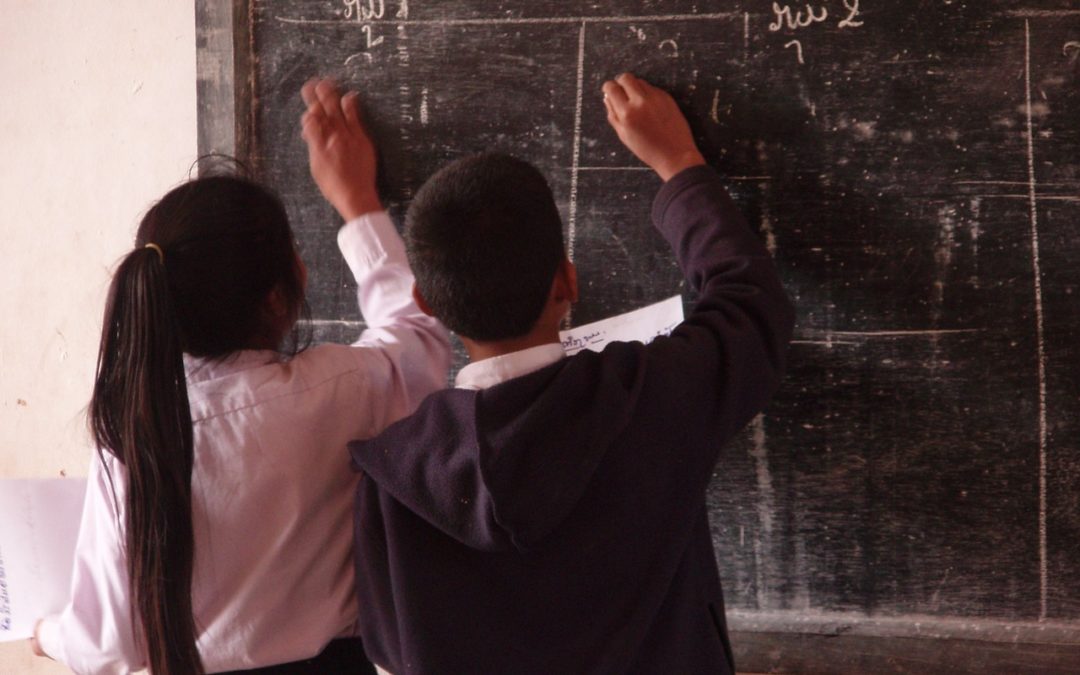No child learns the same way!! Growing up in the early 70’s and 80’s the teaching styles of most teachers was the lecture style. The notion of “one size fits all” is a thing of past. The 21st century brings about a new paradigm of learning so that teachers can reach ALL learners.
What is differentiated instruction and why is it being utilized in the 21st century? Simply put, differentiated instruction means adjusting and teaching students to the way they learn. In other words, a teacher might have a classroom filled with 20 students and each of those students learns differently so, within that classroom, he/she will have different styles/ways of teaching them. This might seem crazy you might say, but it can be done so that effective learning can take place for students. It is also the teacher and the student working together collaboratively so that the learning fits. According to Carol Ann Tomlinson, one of the differentiated instruction gurus, “The idea of differentiating instruction to accommodate the different ways that students learn involves a hefty dose of common sense, as well as sturdy support in the theory and research of education. It is an approach to teaching that advocates active planning for student differences in classrooms.”
You might wonder, where is the world would a teacher find the time to cater to the needs of ALL students? Juggling all these roles effectively is a mighty endeavor, but can be accomplished. Since there are four types of learners, it is could be difficult. The four types of learners are the Visual Learners, the Auditory Learner, the Reading/Writing Learner and the Kinesthetic Learner. How does one teach the same topic to the Auditory Learner vs the Visual Learner, the Kinesthetic Learner vs the Reading/Writing Learner? There is so much to do as a teacher Differentiated instruction, in a sense, opens doors for students’ differences and helps the teacher to make the students “fit in.” How does differentiation help the teacher you might ask? Yes, it lends to more planning time, but it can be done. I do know that I share the idea that Carol Ann Tomlinson said, “Teachers in the most exciting and effective differentiated classrooms don’t have all the answers. What they do have is optimism and determination.”
The 21st Century, no doubt brings many changes including education and as an educator I am called upon to teach and differentiate so all learners benefit. The way I taught right after I left college in the eighties is definitely not how I teach currently. In order to keep abreast with the varying techniques of reaching “all learners” in the classroom it is necessary to upgrade my style of teaching on a regular basis. So it behooves me to keep my learning wheel turning so I will be fully prepared to drive the learning force in the classroom and meet the needs of ALL learners. I want my students to come into my classroom with a clean slate and I won’t listen to former teachers’ preconceived ideas about them, but try to reach out to them in my special way and realize that everyone is diverse in nature and should be treated as such. “The mediocre teacher tells, the good teacher explains, the superior teacher demonstrates, the great teacher inspires.” This is how I see myself: an inspiration to my students.
Reference
Tomlinson, C. A., (2000). The Differentiated Classroom, Responding to the Needs of All Learners. ASCD, Alexandria, VA, USA


Nice job Marcia. Every child learns differently and teaching is very different today than it was years ago. It’s more about the process than giving students the answers.
Thanks Carmen for the feedback!
Enjoyed the post and agree we must evolve as educators to meet the needs of our children.
Thanks for the support and feedback!
Meeting the needs of all of our students is what makes teaching an art! Nice work Marcia!!
Thanks Dawn for reading as well as the support!